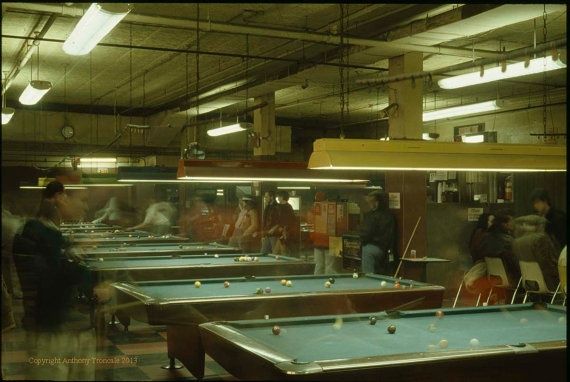In my teenage years, when I sometimes played pool for money, there were many unwritten rules to navigate.
One, an obvious one, was that a player gambling on a game cannot receive serious strategy coaching from someone who is watching. It’s okay to chat with friends on the sidelines, but not to get a direct opinion.
If I shoot this ball in that pocket, is there room for it to go in cleanly, or is it blocked by that other ball? A millimeter difference could mean a lot of money. No advice.
People who wanted to watch a serious game (a game with money wagered) were expected to stay seated a respectful distance away. They could watch the action, but too far to bump a player or to give precise advice.
So one day, in the midst of my game, a pool hall elder passed by. He paused, looked at me, and asked “How are you making out?” Of course he could see the table and judge for himself. I took a step back, folded my arms and rested against my cue stick.
“Well, the guy I’m playing is pretty good. What do you think I should do here?” I asked. We both knew that coaching is forbidden, and my opponent was watching closely to be sure we didn’t overstep.
“Play Hollywood Style,” my mentor declared in a bold voice.
“What’s Hollywood Style?” I had never heard of this technique. He smirked. Pointing at the table, speaking slowly and deliberately, he gave my answer:
“Shoot — and don’t miss!” he laughed and walked on.
As a teen looking for an identity, I admired some of the classic accoutrements of pool players. One day in a jewelry store, when I was perhaps 15 years old, I found a silver money clip. It had unique decorative art and a Tiger’s Eye stone for good luck.
I immediately felt this had to be part of my identity, so I bought it. At that age, it was a substantial investment for me.
I never used it much, but it has great sentimental value.
In 2022, I had the words “Hollywood Style” engraved onto it.
“Shoot, and don’t miss” seems like sound guidance, even beyond the pool table.







Hollywood Style. I enjoyed the story which brought back a memory of Julian’s and other ‘disreputable’ pool halls. I loved the vision of the older player citing ”Hollywood Style.” I could almost smell the cigar stub that was sure to have been in his mouth.